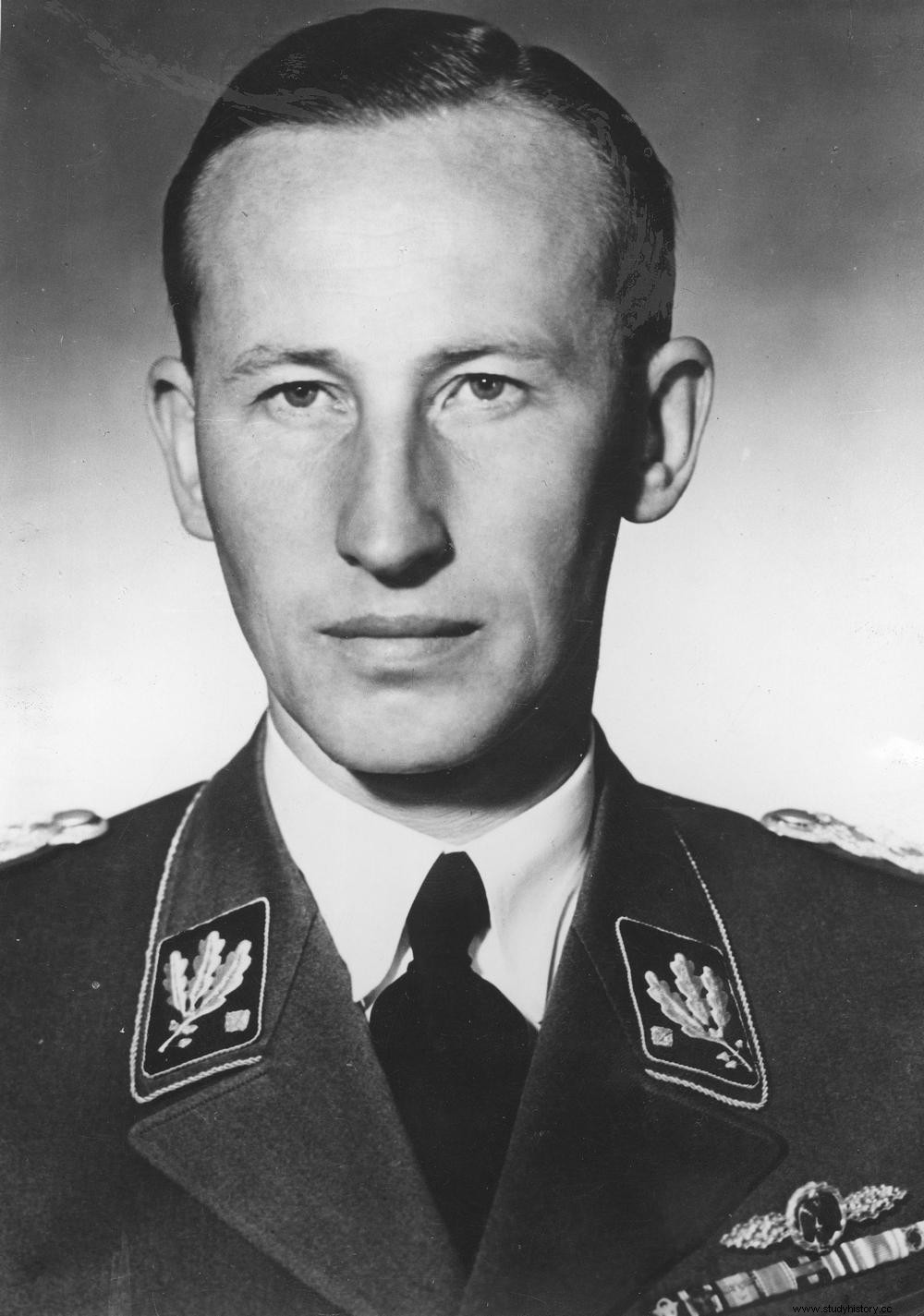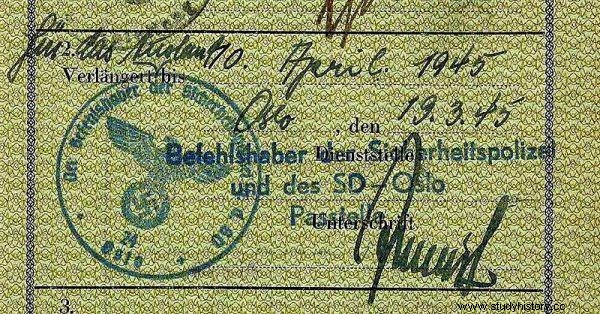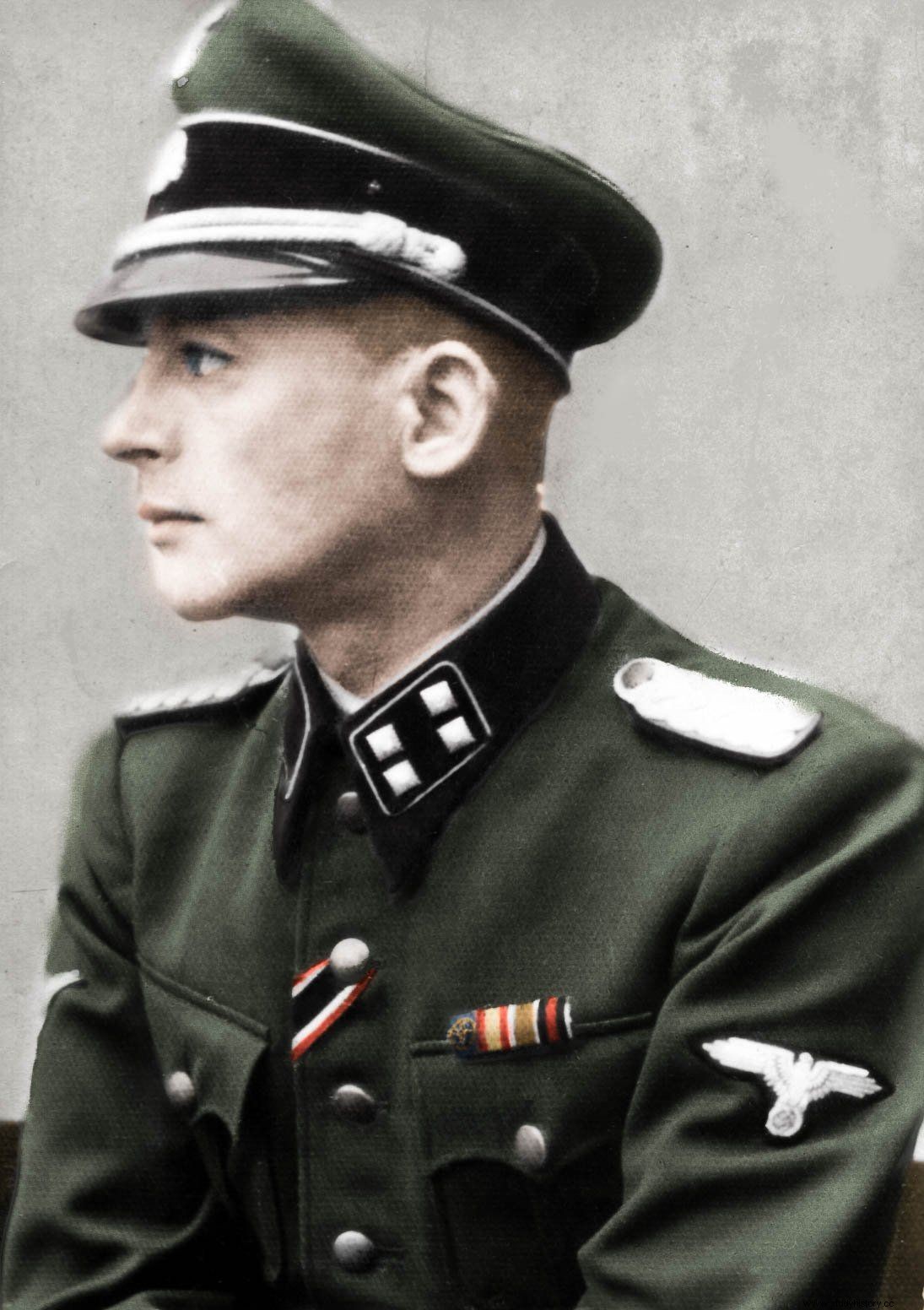The Nazis waged war on all fronts, including the currency front. Using the money of concentration camp prisoners to counterfeit, they launched the largest counterfeiting campaign in history. Charlotte Krüger found out that ... her own grandfather was behind the entire operation.
The nestor of the Krüger family, Bernhard, who became the hero of the book "My Grandfather Forger", was a nice old man, always nice to his relatives and carefully dressed. He gave candy to his grandchildren, bred canaries and collected stamps. There was no indication that 50 years earlier he had been a formidable SS officer on whom the lives of nearly 150 prisoners in the Sachsenhausen concentration camp depended. And that he was in charge of the largest counterfeiting operation in history. Only… what did the Nazis need counterfeit pounds for?
We'll overwhelm England with money!
After the outbreak of the war, it became clear to the leadership of the Third Reich that the main enemy in the struggle would be Great Britain - an enemy threatening due to its spirit, determination and powerful colonial resources. In order to oppress the "perfidious Albion" and hasten the victory, the Germans resorted to various, sometimes surprising ways.

The plan, flooded with Great Britain with false pounds, appeared in mid-September 1939 at a meeting with the head of the Reich Main Security Office, Reinhard Heydrich (source:public domain).
Already in mid-September 1939, the then head of the Reich Main Security Office, Reinhard Heydrich, his close associate Alfred Naujocks (the SS officer who organized the Gliwice provocation in August 1939) and SS Major Bernhard Krüger, met. There, Naujocks introduced the unusual idea of weakening the British economy by ... flooding it with counterfeit pounds.
Perfectly counterfeit banknotes were to be dropped over Great Britain from German planes, and also transferred to the Islands by other routes, for example in diplomatic baggage and by neutral countries. When confidence in the British currency is destroyed, the brand will take over the world market - predicted. Himmler, who liked unconventional methods of operation, approved the idea and sent it to implementation.
From unemployment to SS
Bernhard Krüger was born in 1904 in the garrison town of Riesa in Saxony. His father Franz Krüger, first a cleaner in a factory, later serving in wealthy homes, raised his son with a hard hand. He had high hopes for him, expecting Bernhard to achieve social advancement in his life. However, he was badly disappointed. Not only did my son not get an education or a profession, but after the economic crisis in the 1930s he found himself unemployed ...
Like many young people like him, he was drawn to the Nazi movement at the time, giving its followers a sense of belonging and strength, and the promise of a better life in a renewed Germany. In 1931, Krüger Jr. joined the SS and NSDAP. As a radio amateur, in the SS he was assigned to the technical services, which dealt with maintaining communication and eavesdropping on enemy broadcasters. From there, was sent to the Security Service (SD) , led by the aforementioned Reinhard Heydrich. This is how his career path was described in her book by Charlotte Krüger:
The amateur radio operator Krüger systematically climbed the ranks of the SS hierarchy:he became a truppführer (1933), a hauptscharführer (1934), an untersturmführer (1935) and finally an obersturmführer (1936).
Passport specialist
In the fall of 1938, Bernhard was transferred to the headquarters of foreign intelligence in Berlin. However, he did not work there for long:due to health problems, he moved to the passport office at the police presidency in Berlin. He became interested in passports, their quality and methods of production. How did this come about?

According to Krüger, the German passport had very poor security. the photo shows the extension of validity of such a passport by SD in Norway in 1945 (photo:Huddyhuddy; license CC BY-SA 3.0).
Charlotte Krüger in the pages of the book "My grandfather forger" says that it began with admiration for the competition:
He researched ID documents from different countries and in particular he was impressed by the "technical perfection" of the English passport. It largely "surpassed" the outdated German passport, which, in my grandfather's opinion, was not representative enough for a "great power passport". In a letter to his then boss Alfred Naujocks, he warned that the document was a "gift for forgers" and foreign secret services.
A team that is easy to get rid of
Most likely, it was these particular interests that made Krüger assigned to a secret operation of counterfeiting British money. Naujocks, Heydrich's special-purpose man, had already set it up. As part of the operation "Andreas", he gathered specialists who at the Spechthausen paper mill near Berlin dealt with the production of counterfeit pound banknotes.
The action, however, was slow. The quality of the counterfeit products was poor, the workers were stealing money and Naujocks had a conflict with Heydrich. As a punishment, he ended up in an SS line unit and marched to the Eastern Front. His place in 1942 was taken by Bernhard Krüger. The name of the project was also changed. From then on, the money counterfeiting operation was codenamed:Operation "Bernhard".

In search of professionals necessary to counterfeit British currency, Krüger visited concentration camps. Of course, he was also sent to Auschwitz (photo:Tulio Bertorini; lic CC BY-SA 2.0).
Krüger started by searching for the right people. To complete the team, he visited ... several concentration camps, including the one in Auschwitz. He chose experts:
Graphic designers, in particular book printers, engravers, reproductive photography specialists, electroplating artists, typesetters, banking and securities specialists, apprentices of crafts who require manual skills .
He wanted all of them to be of Jewish origin. Why? All this so that after the end of the project they can be liquidated without regret, for the sake of secrecy .
Billions of pounds… made of rags
146 prisoners from 15 countries (including Polish Jews) were transported to the camp in Sachsenhausen and placed in two isolated barracks:numbers 18 and 19. They were provided with good conditions, food and medical care. They wore white coats, not striped uniforms, only worked eight hours and were given cigarettes.
Their task was to develop a method of effectively counterfeiting British banknotes. The Nazis dreamed of releasing 4.5 billion credible looking pounds and using them to drive the British economy into deep inflation.
Counterfeiters had the right tools and materials at their disposal, the then most modern Victoria-Tiegel 4 printing machine, as well as engraving and photo studios. However, the task facing them was not easy. Back in the days of Naujocks, it took the Germans a long time to discover which paper the British printed their pounds on.
It was only after a year of trials and experiments that it was possible to establish that they were using ... old linen mail bags, and production technology dates back to the 18th century. A similar effect was achieved by German counterfeiters by making paper from old linen rags. The resulting material was rustling, had the correct strength and weight, and shone properly under UV light.

The greatest forger in the history of SS-Sturmbannführer Bernhard Krügerf in a photograph taken during the war. Photo from the book "My grandfather forger" (source:Krüger family archive; colorization:RK).
Overcoming the remaining 150 security features on the banknotes was not easier. But we managed to do this too - thanks to the skills of Jewish prisoners! For example, the way of numbering banknotes was important, i.e. the proper matching of the number, banker's signature and date.
One of the versions says that German mathematicians developed a suitable formula for this. According to another, the secret was revealed by an employee of the Bank of England. The least problematic was the ink used for printing, because it was delivered to Great Britain by ... one of the German factories.
The biggest counterfeit operation of all time
In January 1943, printing of 5-, 10-, 20- and 50-pound banknotes originally released in 1930-1934 began in Sachsenhausen. They were divided into four groups. The first two:perfect fakes with very slight flaws were considered safe to use abroad. Copies with misprinting were used in the occupied countries. On the other hand, the Nazis wanted to drop pounds with serious errors from planes over Great Britain. However, it never happened.

The Germans wanted to flood Great Britain with counterfeit notes of such banknotes (source:public domain).
Also often ... agents were paid for with perfect counterfeits. For example, Elias Bazna, a German spy known as "Cicero", operating at the British embassy in Ankara, was given 300,000 counterfeit pounds. In neutral countries, secret scouts liquidated counterfeit money by buying other currencies, diamonds, jewelry, raw materials, groceries and weapons .
A million false pounds were released monthly from Sachsenhausen. Thanks to the secret records kept by the head of barracks 19, prisoner Oskar Skála, it is known that a total of 8,965,080 banknotes were printed there, with a total value of 134,610,945 pounds sterling! Charlotte Krüger writes about the importance of this amount during the war:
For comparison:in 1945 the Bank of England owned £ 422 million in gold. That is, Bernhard's fakes accounted for nearly a third of Britain's gold reserves. "Operation Bernhard" was indeed the greatest forgery of all time.
Hide it, drown it, forget it
At the end of the war, due to problems with importing flax added to paper from Turkey, the counterfeit factory in Sachsenhausen was ordered to switch to counterfeiting dollars. However, this production did not take place, because the Red Army was approaching Saxony.
Krüger evacuated his counterfeiters to the Ebensee camp in Austria. They were supposed to be murdered there, but the Germans did not manage to carry out the execution. However, they managed to hide the traces of their action. In May 1945, several dozen chests with counterfeit money and documents of Operation "Bernhard" were sunk in the deep Austrian lake Toplitz . They were only retrieved from there in 1959 by divers hired by the German weekly "Stern".

Bernhard Krüger as a respectable elderly gentleman together with Charlotte's granddaughter many years after the war. Photo from the book "My grandfather forger" (source:Krüger family archive).
Bernhard Krüger himself was arrested by the British and spent three years in prison. After his release, in 1948, he took a job ... in a factory that during the war supplied paper for Operation Bernhard. However, the past caught up with him a few years later. In 1955, at the request of one of his former subordinates, he was charged with the murder of four prisoners suffering from tuberculosis. During the war, he ordered them to be removed from the barrack, as a result of which they were shot.
For a year, the Berlin police conducted an investigation into this matter. Among others, living prisoners were interrogated, some of whom testified favorably for Krüger. Finally, the Public Prosecutor General decided that the suspicion of a crime was insufficiently justified and closed the case . Krüger lived peacefully among his family, enjoying his grandchildren, collecting stamps and writing memoirs. He died in 1989.
